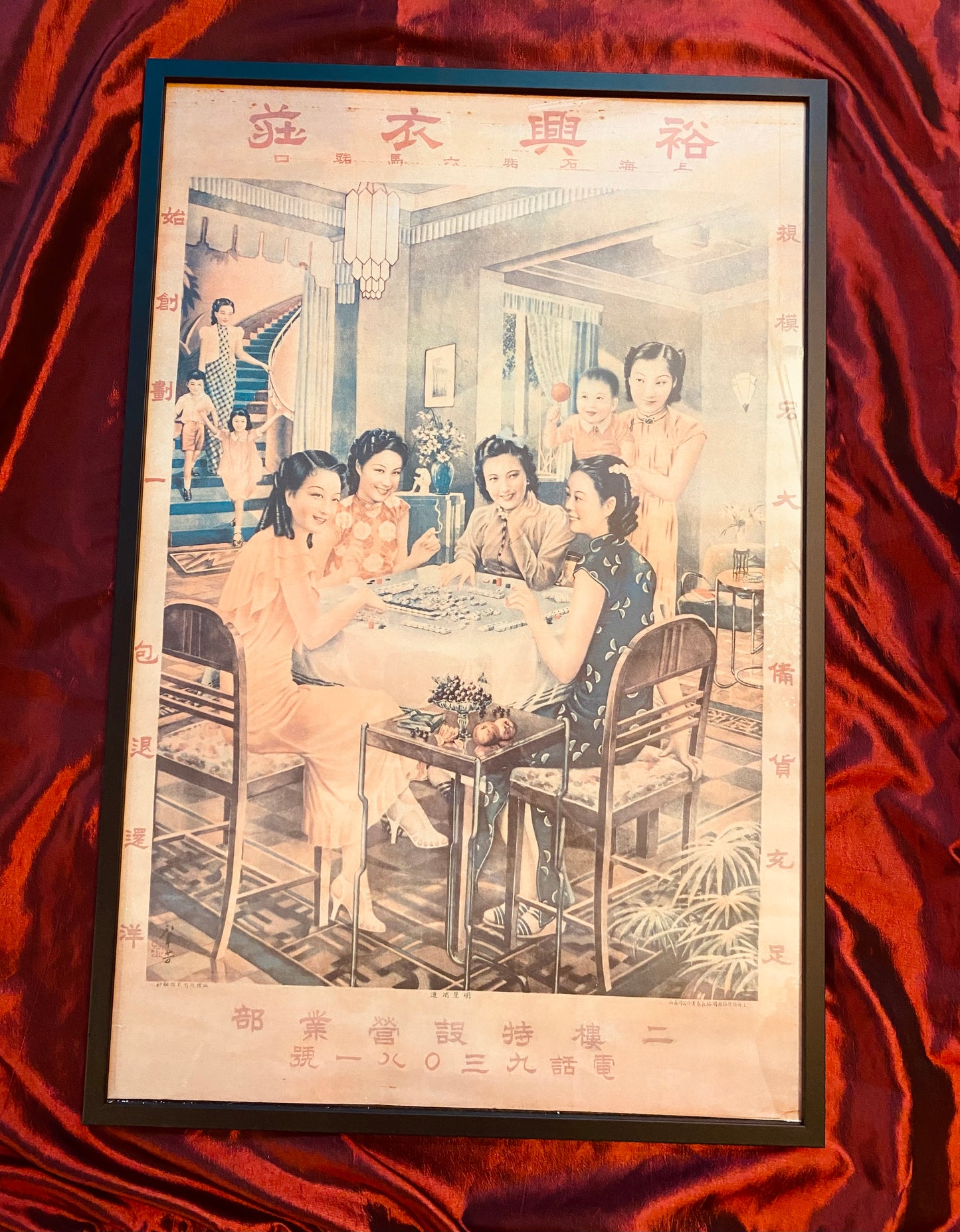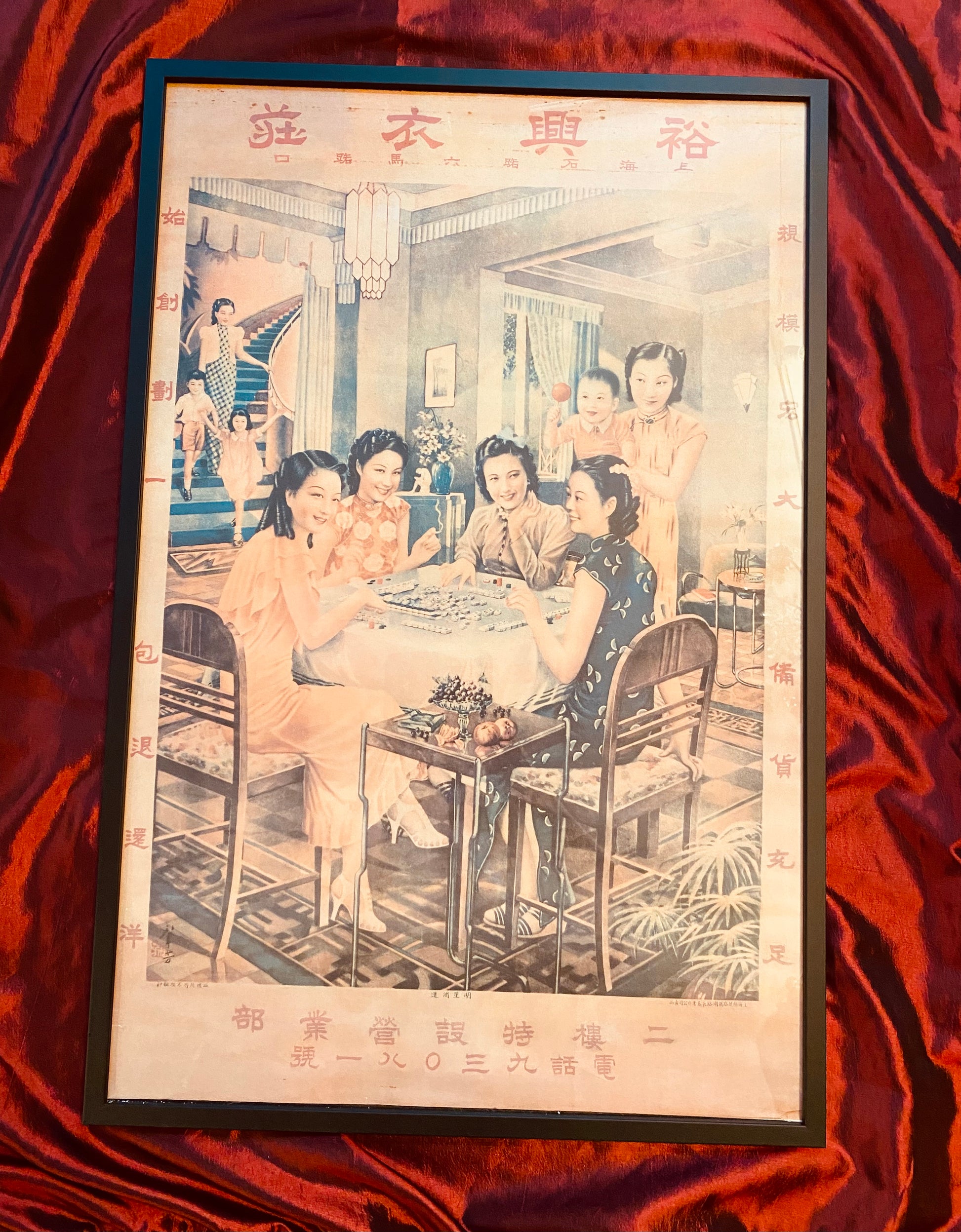The Wigtown Emporium
Vintage Chinese Advertising Poster- Ladies playing Mahjong
Vintage Chinese Advertising Poster- Ladies playing Mahjong
Regular price
£250.00 GBP
Regular price
Sale price
£250.00 GBP
Unit price
per
Shipping calculated at checkout.
Couldn't load pickup availability
Vintage pre-revolution Chinese cigarette advertising poster 30.5 inches by 20.5 inches.
Cigarette advertising in China has a long and complex history, dating back to the late 19th century when foreign tobacco companies entered the Chinese market. Since then, cigarette advertising has been influenced by various political, economic, and social factors, such as the rise of nationalism, the wars with Japan, the Communist revolution, the opening up of the market, and the public health campaigns. Here are some key points about the history of cigarette advertising in China:
- In the early 20th century, foreign tobacco companies used aggressive and sophisticated marketing strategies to promote their brands, such as sponsoring newspapers, movies, sports, and cultural events, as well as creating attractive and modern posters that appealed to the urban elite and the emerging middle class.
- During the Sino-Japanese War (1937-1945), cigarette advertising became a tool of propaganda and resistance, as Chinese tobacco companies portrayed their products as patriotic and anti-Japanese, while foreign tobacco companies tried to maintain their market share by appealing to the Chinese sense of nationalism.
- After the founding of the People’s Republic of China in 1949, cigarette advertising was banned by the Communist government, as smoking was seen as a bourgeois and unhealthy habit. However, some cigarette brands continued to be produced and distributed, such as the famous Panda cigarettes, which were reserved for the political elite and foreign guests .
- In the late 1970s, China reopened its market to foreign trade and investment, and foreign tobacco companies returned with renewed vigor. They used various tactics to circumvent the advertising ban, such as sponsoring public events, distributing free samples, and displaying their logos on billboards, buses, and buildings.
- In the 1980s and 1990s, cigarette advertising reached its peak in China, as the tobacco industry enjoyed a high degree of autonomy and profitability, and the government relied on tobacco taxes as a major source of revenue. Cigarette advertising targeted different segments of the population, such as young people, women, and rural residents, and used themes such as success, happiness, freedom, and glamour.
- In the 21st century, China faced increasing pressure from the international community and the public health sector to curb smoking and tobacco advertising. In 2003, China ratified the WHO Framework Convention on Tobacco Control, which required the country to implement comprehensive bans on tobacco advertising, promotion, and sponsorship.
pseudonyms, as they worked for various commercial companies or political parties.
However, some of the artists who are known or have been identified are:
- Liu Jipiao (1900-1992): He was a pioneer of Chinese Art Deco and designed many posters for the China Travel Service in the 1930s. He also created posters for movies, exhibitions, and magazines.
- Li Mubai (1897-1976): He was a prominent painter and graphic designer who created many posters for cigarette brands, such as Golden Dragon and Double Happiness. He also designed posters for the Nationalist government and the Red Cross Society.
- Huang Yongyu (1924-): He is a famous painter and woodcut artist who created many posters for the Communist Party during the Cultural Revolution. He also designed the logo of the People’s Daily and the portrait of Mao Zedong on Tiananmen Square.
- Wu Guanzhong (1919-2010): He was a renowned modern painter who blended Chinese and Western styles. He also created some posters for the China National Tourism Administration in the 1980s, featuring landscapes and cultural scenes.


